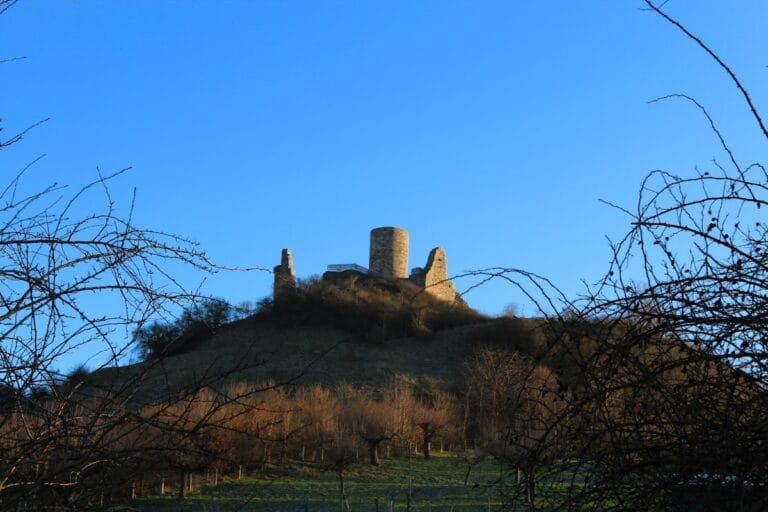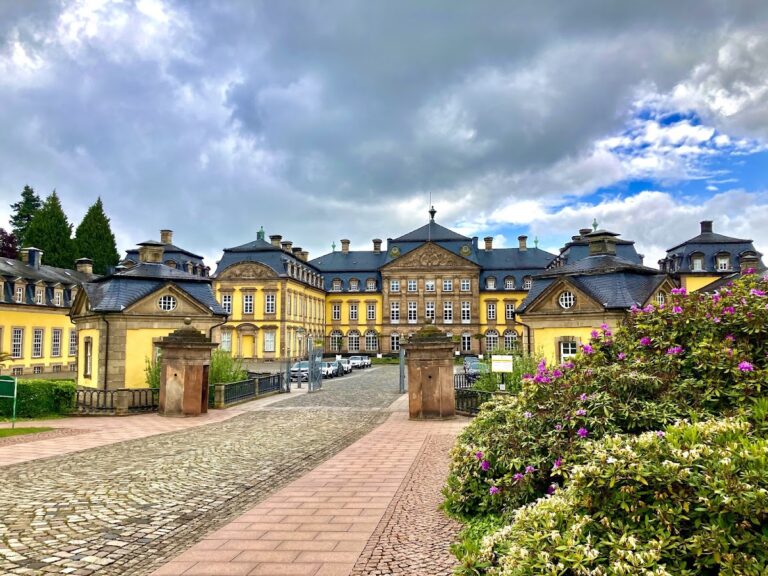Holsterburg: A Medieval Castle in Warburg, Germany
Visitor Information
Google Rating: 4.6
Popularity: Low
Google Maps: View on Google Maps
Country: Germany
Civilization: Medieval European
Remains: Military
History
Holsterburg, located in the municipality of Warburg, Germany, was built during the Middle Ages by the Berkule brothers, Hermann and Bernhard. Constructed around the mid-12th century, this castle served as a strategic stronghold to oversee local agriculture and protect the trade route linking Warburg to Kassel.
The earliest mention of Holsterburg dates to 1191, shortly after the nearby village of Holthusen was first recorded in 1170. Over time, the Berkule family emerged as influential local rulers, eventually becoming vassals to the Archbishop of Cologne after 1224. Despite this allegiance, Holsterburg was also contested by the Archbishop of Mainz, reflecting the region’s complex political landscape. The Berkules exercised harsh authority over their peasant subjects, which caused frequent tensions and armed conflicts involving the neighboring town of Warburg. One notable violent episode occurred in 1245, when Warburg launched an attack against the castle.
In efforts to strengthen their domain, the Berkules expanded their holdings by building Burg Calenberg, another nearby fortress. However, the aggressive actions of Berkule knights during the 1290s—marked by raids and disruption across the surrounding areas—led to growing unrest among local communities. In response, Bishop Otto von Rietberg of Paderborn formed an alliance with a coalition of regional towns including Warburg, Marsberg, Höxter, Fritzlar, Hofgeismar, Wolfhagen, and Naumburg. On November 6, 1294, these forces jointly attacked Holsterburg, laying it to ruin. Several knights were captured and executed, while Johann Berkule surrendered to the bishop and became a servant in Warburg.
Following its destruction, Holsterburg was deliberately covered with an earthen mound. This act was likely intended to symbolically erase the Berkule lineage and preserve the site exactly as it had been in 1294. The castle remained buried and forgotten until archaeological interest revived in the 21st century.
From 2010 until 2017, systematic excavations led first by Andrea Bulla and later by Kim Wegener uncovered detailed information about Holsterburg’s design and history. These investigations challenged earlier beliefs that the castle had been surrounded by water and provided fresh insight into its construction and usage before its abrupt devastation at the end of the 13th century.
Remains
Holsterburg is notable for its unusual design as a lowland castle constructed in an octagonal shape. This architectural form is exceptionally rare in the Westphalia region and among German castles in general, with only a few comparable examples such as the later Burg Kilchberg near Tübingen and several castles in the Alsace region. The castle’s perimeter wall forms an octagonal ring approximately 87 meters long, enclosing a courtyard measuring roughly 26 meters across, covering an area of about 428 square meters.
The outer wall was expertly built from smoothly finished ashlar blocks—large, squared stones carefully worked for uniformity. The corner stones, in particular, demonstrate precise craftsmanship with finely smoothed joints nearly invisible at the edges. Decorative patterns were incorporated into the masonry, including herringbone arrangements and fine joint lines, adding aesthetic refinement to the defensive structure. Two parallel wall layers were bonded together using a mortar mixture of sand and rubble, strengthening the overall fortification.
Inside this ring wall, archaeologists uncovered a limestone channel embedded flush with the inner stone surface. This feature is interpreted as part of a heating system, hinting at some degree of comfort or warmth provision within the castle’s interior. Within the enclosure, there were three main buildings situated at different points: one to the northwest, another on the east side, and a complex of attached structures along the southwestern and southern boundaries.
At the heart of the northern section of the courtyard stood the bergfried, or keep, a tall fortified tower serving as a last refuge and lookout point. Today, the original footprint of the bergfried is visible as an excavation pit filled with debris from the castle’s destruction.
Among the artifacts recovered during excavation was a finely carved ivory comb with two rows of teeth, dating to the later part of the 12th century. This object is thought to have had liturgical use, indicating the castle’s connection to religious practices or ceremonies.
Rather than a motte—a raised earthwork typical of many medieval hill castles—the mound covering Holsterburg is an intentional earthen covering placed after the castle’s demolition. It effectively sealed the ruins and preserved the remains beneath a stable layer of soil, leaving the castle frozen in the state it occupied at the time of its downfall in 1294. This preservation has allowed modern archaeology to study the site with remarkable detail, revealing its unique layout and construction methods.










